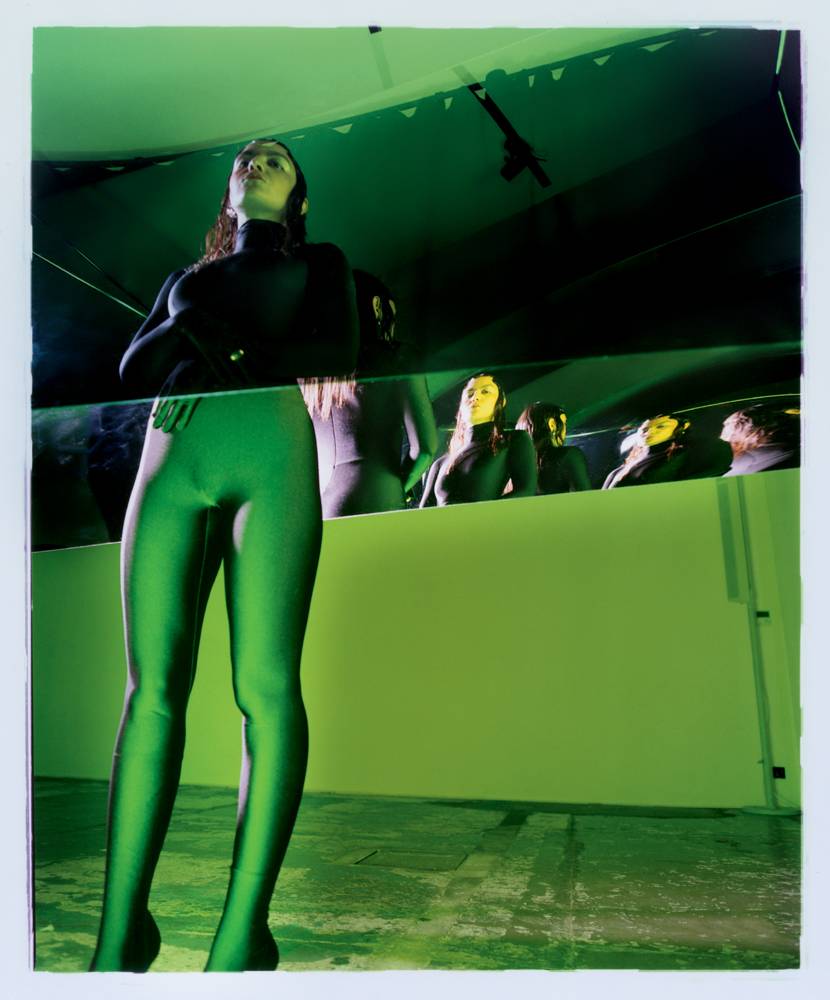Item number
August 03, 2022
The French artist brings the culture of the young North African diaspora to life like no other in contemporary art. Far from pastiche, she transmutes it into masterful initiatory stories by drawing inspiration from both video games and the most popular anime and manga.

Portrait of Sara Sadik by Lee Wei Swee. Clothing, BALENCIAGA.
When we ask Sara Sadik what characterizes her art and to explain the meaning of the term “beurcore” that she uses to describe it, she answers as follows: “It’s a term that I came up with to be able to describe my work without mentioning a thousand years and to avoid having it defined for me with words that don’t suit me. I wanted a word that sounded ‘powerful’ and easy to remember. The suffix ‘core’, which is mostly used in music, allows both at the same time. Beurcore is the culture of the young North African diaspora in France in its most emblematic form. I imagine it as a movement that already exists but has not yet been defined other than with the catch-all terms of ‘urban culture’. It is both what is created, but also consumed by this community.”
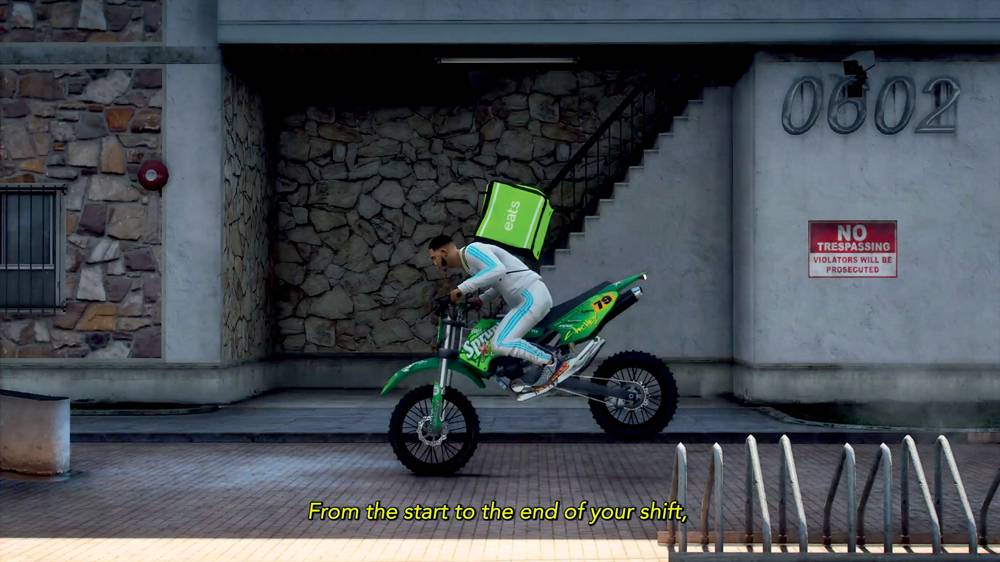

Sara Sadik, still from the video “Khtobtogone” (2021).
“Beurcore is the culture of the young North African diaspora in France in its most emblematic form. I imagine it as a movement that already exists but has yet to be defined other than with the catch-all terms of ‘urban culture’.” -Sara Sadik
Also compared to Afrofuturism, the work of Sara Sadik is therefore part of a community culturewhose references she makes exist in contemporary art, catchlines from French rap to the most popular video games, anime and manga. However, his work is not just a collage or an art of pastiche. The story recurrently offered by Sara Sadik is based on initiatory journeys – not only in reference to what is commonly called the “learning novel”, but, more surprisingly, in the register of initiation. occult. The artist’s emblematic narrative is neither the Bildungsroman of the “youngster from the neighborhood” nor the ghetto education of the white spectator, foreign to the subcultures of the children of immigrants, whose hand would be held to visit the zoo. The reason for this occult presence is found in the transformative vocation of Sara Sadik’s art. In this regard, it would not be outrageous to describe the artist as a modern-day alchemist. His work “transmutes” his raw material so that the spirit appears in the things themselves: this is the case with the taga (cannabis resin) that permeates the soil of the utopian oasis of Zetla Zoneor even springs of sodas that water it – like an elixir of life or even the abundant and sweet waters of the Kawthar (river of paradise, hadith no. 3361).
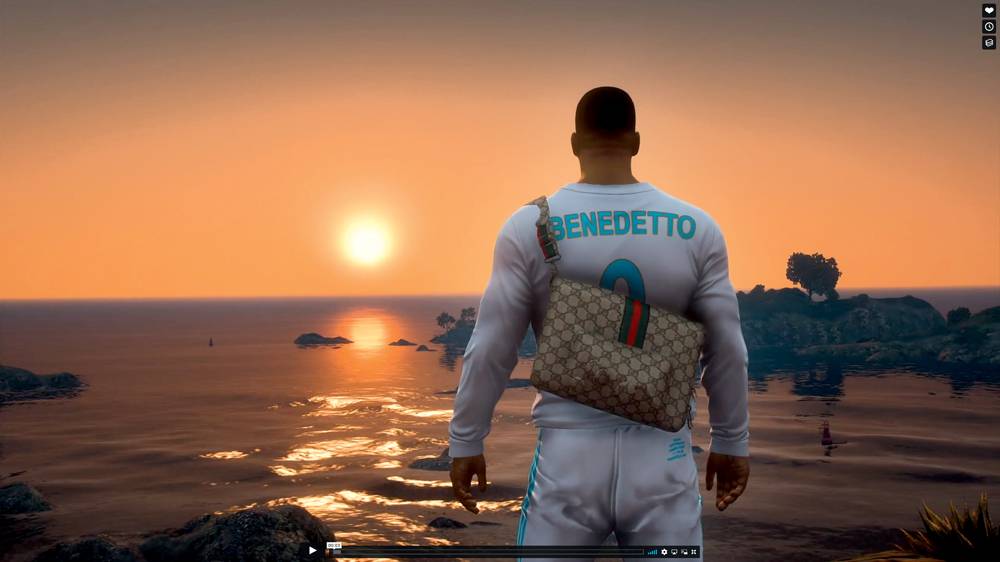

Sara Sadik, still from the video “Khtobtogone” (2021).
As for You deuh the miss, Hlel Academy Where Carnalito Full Optionthese works are as much films as situationss (particularly within the prison environment for Carnalito…) invented by Sara Sadik to transmute the soul. The artist, under the guise of a TV presenter, takes on the function of a great hierophant, putting young men to the test through their physical performance, but above all their ability to love, in a setting that is certainly futuristic but which invariably oscillates between the reality TV show and the mystagogical experience [initiation au Mystère] .
Sara Sadik’s works are as much films as situations invented by the artist to transmute the soul.
Here again, behind the apparent pastiche, the density of mystery stands out. The tests carried out during performances and filmed should probably not be read literally, as an assessment of the strengths and weaknesses of the candidates (most often non-whites and descendants of immigrants), but as the symbolic text of a entry into a radically different space, in which the virtual becomes reality and rises up against the apparent reality where all values are reversed.




Sara Sadik, screenshots from the video “Ultimate Vatos: strength & honor” (2022).
Too often, the violence of poverty and racism is analyzed according to its economic and social consequences. But it is just as much a crisis of values, an insidious process of desymbolization. Cultural and religious repression aims not only to exclude, but also to foreclose any sense of community underpinned by the symbol. When the most right-wing fringes of the political and cultural field strive to define France through Judeo-Christian roots, they actually aim to deprive non-whites of any symbolic foundation within the national narrative.
Repopulate the postcolonial desert through the work of dreams and symbols is undeniably the meaning of this affirmation of the virtual in Sara Sadik – virtual that can be understood according to its philosophical meaning as a field of possibilities, but also as immersive multimedia. Long before the appearance of computer-simulated realities, this third space was the fruit of visionary experiences, and established by initiation rites – and this is the hidden meaning of the great symbols of spiritual chivalry, such as the quest for the Grail. , of the philosopher’s stone, of the lady, or the meeting of the angel.
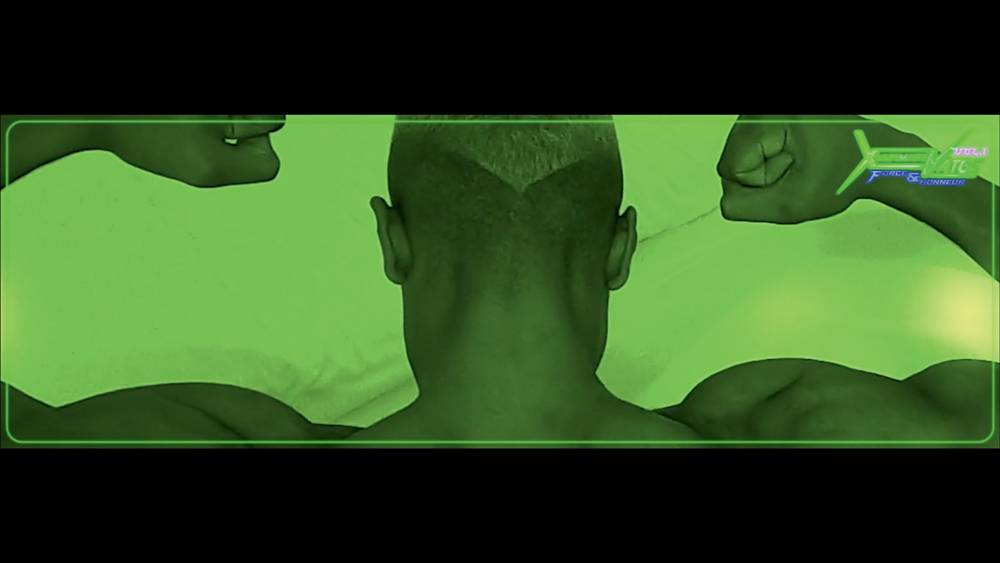

Sara Sadik, screenshots from the video “Ultimate Vatos: strength & honor” (2022).
Sara Sadik manages to transform these hated cultural industries into an alchemical laboratory able to operate the transmutation of lead into gold.
With Sara Sadik, the event as resymbolization thus comes to oppose the event-spectacle which has at best the virtue of filling boredom. Using the graphics engine of the GTA game, in Khtobtogone, the artist’s “augmented” reality brings to life a Marseilles environment in which the protagonist, a neighborhood youth officiating as an Uber delivery man, painfully negotiates the meaning of his life between his (chivalrous) loyalty to the male world of the street and the amorous commitment (in reality no less chivalrous). Opening this transdimensional door, Sara Sadik covers with ridicule the accepted lamentations on the moral defeat of youth in a world populated by brainless influencers and advertising algorithms. The artist manages to transform these hated cultural industries into an alchemical laboratory capable of transmuting lead into gold. This is how we can read the whole allegorical charge of the two key words of the rapper Jul: “gold and platinum” and “They call me the UFO”.
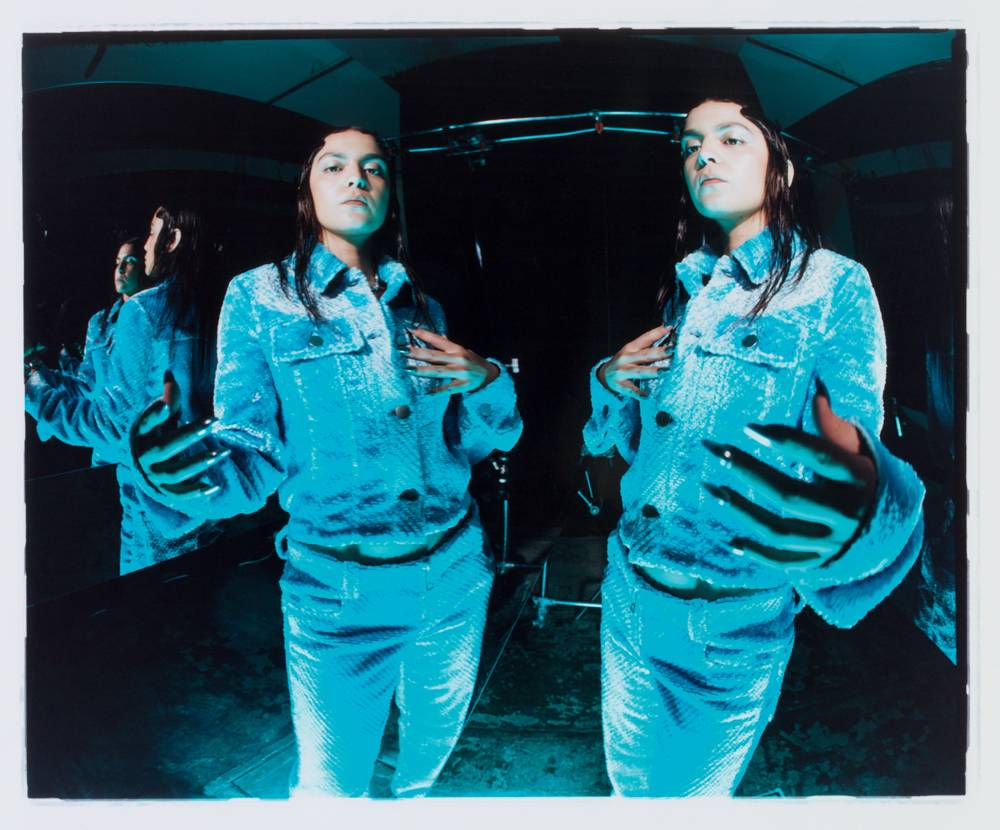

Portrait of Sara Sadik by Lee Wei Swee. Clothing, BOTTEGA VENETA.
Indeed, the gold of the alchemists is not a simple precious metal. The purification of impure minerals is not a venal process. The alchemists sought to produce a perfect mirror of the lights of the heart – the brilliance of gold as a divine signature in things. No one really knows what the philosopher’s stone meant, but Michael Maïer was able to write that it was “vile and cheap thing, trampled on the path of travelers, and even in the dunghill”.
With Sara Sadik, the radiance of love melts the material anchorage of “pop” and “urban” to join the ethereal sky of the UFO.
How does Sara Sadik go about transmuting the ter-ter (the neighborhood), this inexpensive thing and to accommodate the UFO? As in all mystagogy, love is the essential operator of this prodigy. We could have chosen to read this theme in the artist’s work from the angle of the affective impasse of segregation and poverty, but it also seems desirable to insist on the allegorical value of amorous union, as was the figure of the marriage of the Sun and the Moon among the alchemists, symbol of the life given to matter in their laboratory. With Sara Sadik, the radiance of love melts the material anchorage (or its vocation as a sociological object) of “pop” and “urban” to join the ethereal sky of the UFO, where destiny of the damned of the earth finds its redemption in the figure of the angel – or of a Super Saiyan in the middle of the clouds.
Sara Sadik presented a video within the exhibition Free Corps – A young French scene from May 5 to 28 at the Studio des Acacias, Paris 17th. She is represented by the Crèvecœur gallery (Paris).
Between video games and manga, how artist Sara Sadik stages “beurcore” culture

